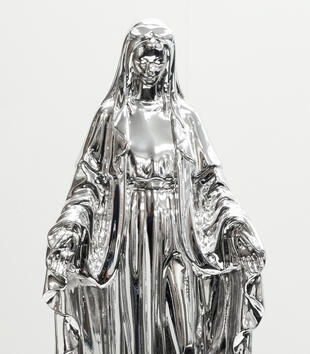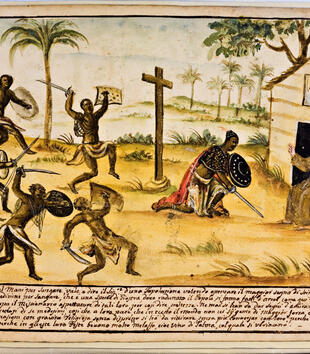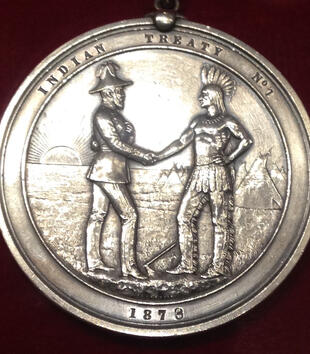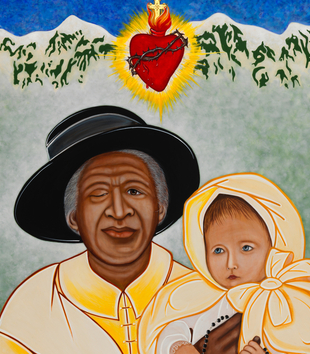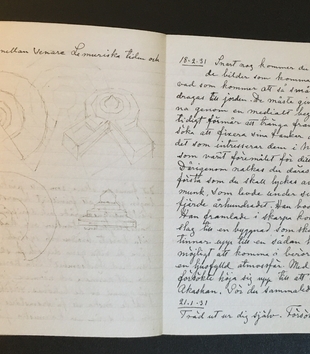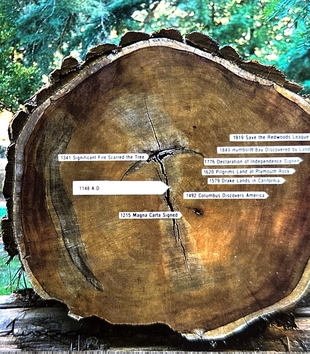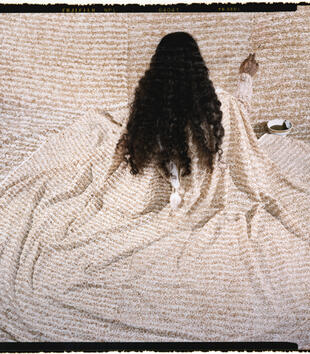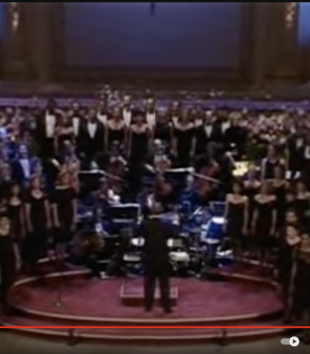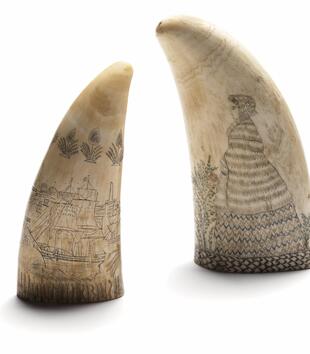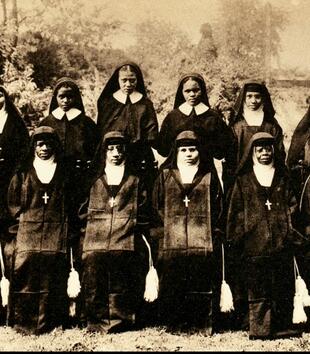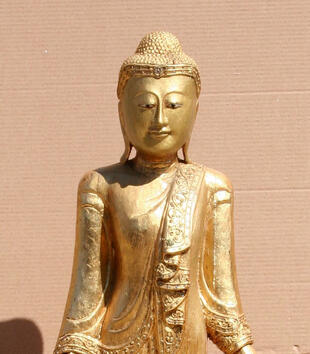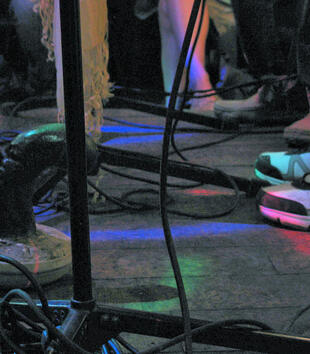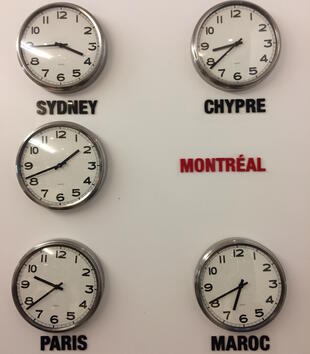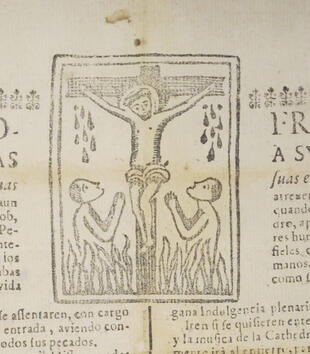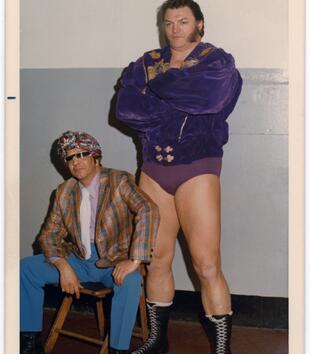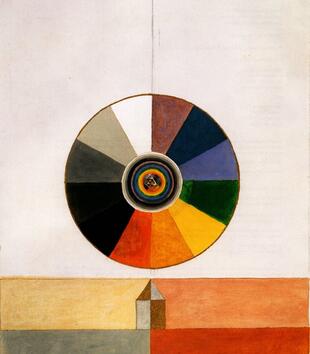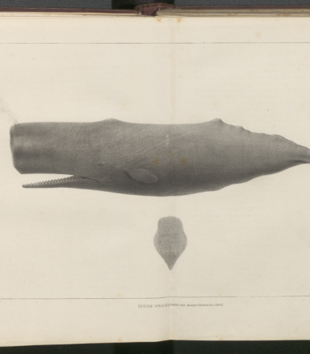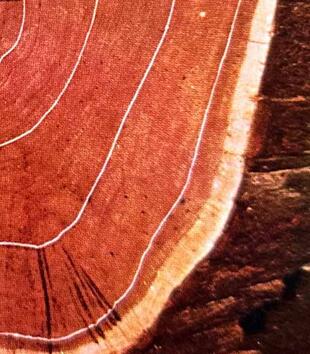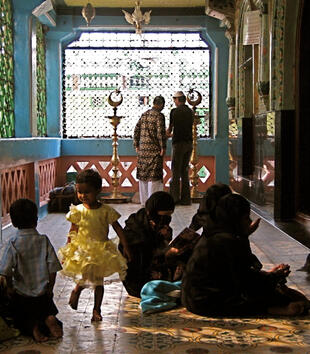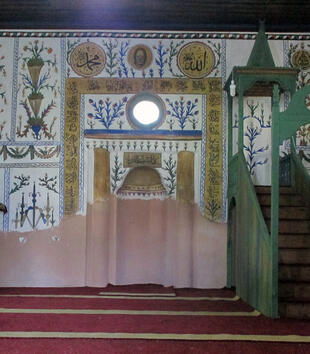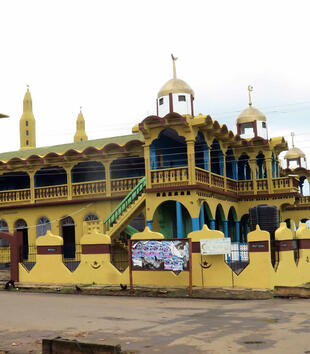You are here
MAVCOR Journal
MAVCOR Journal is an open access born-digital, double blind peer-reviewed journal dedicated to promoting conversation about material and visual cultures of religion. Published by the Center for the Study of Material and Visual Cultures of Religion at Yale University and reviewed by members of our distinguished Editorial Board and other experts, MAVCOR Journal encourages contributors to think deeply about the objects, performances, sounds, and digital experiences that have framed and continue to frame human engagement with religion broadly understood across diverse cultures, regions, traditions, and historical periods.
-
The authors set the nucleating body of the medieval Virgin in conversation with contemporary reimaginings of the Madonna to ask how hybridization, fracture, insertion, assemblage, color, multiplicity, and meaning around sacred and secular exchange can change the way we know and see in relation to these forms from the medieval to the postmodern.
-
This Constellation is intended to complement the author's book and give readers access to color versions of some of its illustrations, which could only be printed in black and white in the original publication. As in other parts of the Iberian world (i.e., the Iberian Peninsula and all the territories under Spanish and Portuguese control), these performances were usually staged by lay Catholic confraternities.
-
Votive practice in the Americas has Indigenous, Christian, and syncretic origins that contribute to the diversity of offerings, as do social class, gender, age, and region. Petitionary devotion is structured by an exchange that the votary proposes to a folk saint or miraculous image. The offerings that votaries promise are based on the presumption that folk saints and miraculous images, because they are like us, value what we value.
A special issue curated by Kati Curts and Alex Kaloyanides
Introductory Essay
-
Kati Curts and Alex Kaloyanides introduce this special issue of MAVCOR Journal devoted to examining four key categories: “Material,” “Economies,” “Religion,” and “America(s).” The ambition of this issue is that the collective inquiries of its authors, which span various interpretive histories and genealogical fragments, can offer ways to better understand their assorted conveyances, as well as the powerful grip of their critical conjunction.
Individual Contributions
-
For many Indigenous people of Turtle Island, also known as North America, treaty medals are material reminders of sacred promises made between their nations and the British Crown or the U.S. Government. Settlers and colonial officials, by contrast, have often treated these medals as mere trinkets.
-
More than a portrait of a holy person, an icon structures a present encounter with a saint and the community that the saint represents. What kind of encounter does Greeley’s icon conjure with race and Catholicism in the Old West?
-
Through Af Klint’s journal entries and sketches, we can shift analyses of sacred space from the guise of transcendent force that simply “appears,” in the phenomenological nomenclature, and instead approach it as technique.
-
These redwood rings are both family trees and family circles, literally naturalizing a canonical “American” familial heritage insistently recited and instantiated in many media and locations: artistic and built environments, judicial practice, legislation and policy, textbooks, land use, and national land theory. Heritage is a family business.
-
I wondered—how does a person become a place? A street, city quarter, mosque, or town could take the name of the wali interred there, like the cities of Sidi Slimane and Mawlay Idris. The sacred enters physical space through the body.
-
In her memoir, The Red Parts, Maggie Nelson writes about the over-thirty-year-old unsolved murder of her aunt, Jane Mixer, a case brought back to life in a Michigan court room. Who gets to tell this story? How should it be told?
-
The musical in which this song appears includes archetypal depictions of the modern artist and his attendant gendered capacities and failures. Sondheim would point out: its lyric is a single sentence; it is a description of a process; it includes a word, “forever,” that he observes makes him cry.
-
From Fijian ceremonial objects to nineteenth-century American whaling souvenirs, to airline membership cards, this constellation explores material economies through one raw material: sperm whale teeth.
-
Was [the Magdalens'] decision to own in perpetuity the status of penitent a judgment on waywardness, or a benediction? An internalization of white surveillance, or its repudiation?
-
While a stationary bike is the main conduit for the SoulCycle experience, perhaps no object plays a greater role in facilitating SoulCycle’s choreography of emotion than the brand’s signature grapefruit-scented candle.
-
Biblical womanhood blogs often resemble the idealized Christian home they encourage women to build. Businesses have long recognized the potential for profit in networked domesticity, enticing bloggers to participate in commercial enterprise by promising percentages of purchase costs made through their sites.
-
This golden Buddha, which has a striking resemblance to a Burmese Buddha in the British Museum, came up for sale on eBay for the sum of $5,000.00. The material of teak, the economies of the British and Burmese empires, the religion then being named "Buddhism," now give us this American eBay Buddha.
-
The fragrance Wifey by KKW Fragrances was released in 2019. As wife to black artist Ye (formerly Kanye West), Kim KW claimed and sold the role of wifey. The “wifey” is not simply a wife. She is a model or caricature of a wife, a down-ass. The “wifey” signifies a new ideal in our contemporary popular culture.
-
Eshu-Elegguá is a divinity in the Regla de Ocha-Ifá pantheon characterized as a warrior and messenger. Enslaved Africans in Cuba taught their descendants that a good relationship with this divinity is helpful for making risky choices and providing protection when embarking on a treacherous new beginning.
-
The bible "God's Word for the Oil Patch: Fuel for the Soul" offers insight into how people theorise both the value of energy and the kind of lives people need to live to access this value. The publication implies that to have the kind of soul that lives a good life, you need to manage oil and its energy: souls are things that need fuel, be it "God's word" or oil itself. Oil work, in this context, becomes soul work.
-
A row of clocks. Each one with an identical, nondescript face—except for the hands, which are conspicuous in their different orientations. Clocks are the kind of “religion” that spills out beyond the sphere of the sacred. Rows of clocks that evoke utopian, aspirational feelings of global connectedness. These are “religious” feelings in the deepest sense of the term.
-
A simple woodcut on a late-seventeenth-century membership letter of the confraternity of Souls of the Cathedral of Lima depicts two souls bathed in flames, gazing up at Christ crucified. Stylized drops of blood pour from each of Christ’s wounded hands, visual embodiments of the doctrinal logic behind indulgences—the great sacrifice of Christ and of the martyrs of the church created a treasury of merit that ordinary sinners could draw upon.
-
This is a pair of highly engineered, durable waterproof socks that exemplifies the rebranding of sportswear for the American Muslim market. Marketed as “wudhu socks,” the socks protect the feet and ankles from ritual impurities, and are intended to allow one not to wash one’s feet between ablutions.
-
On April 5, 1832, Peter Jones presented King William IV with a bible he translated into Anishinaabemowin. This exchange reflects Anishinaabe gift-giving practices, in which bible gifts can be regarded as practices used to build and refuse particular religious, political, and material relations.
-
Don Leo Jonathan was born 1931 to a Mormon family in Utah. During his professional wrestling career, Don Leo capitalized on certain anti-Mormon prejudices during a period of Mormonism’s erstwhile mainstreaming and clean-cut imagination in American culture, often performing as the "heel," or villain.
-
In 1929, Henry Ford opened the Henry Ford Museum. That same year Ford Motor Company set ablaze vast swaths of rainforest in Brazil to clear land for Fordlandia, one of Ford’s rubber plantations. In Ford’s “progressive” trail across the Americas and in pictured masses arrayed outside Ford’s plants, we glimpse material economies of religion christened as political economy and mass produced in Ford’s name.
Group Conversations
-
Tracy Fessenden, Hillary Kaell, and Alexia Williams discuss three iterations of religious, material economies: bus stop clocks, cloistered Magdalens, and a Catholic prayer card from Denver.
-
From the familiarity of scent to the spread of colonial/space time, and through Black vernacular culture and “linking” us to divine power through the digital, Ellen Amster, Dusty Gavin, and Suzanne van Geuns introduce us to the strange intimacies of the wifey.
-
In Fall 2020, Paul Johnson, Emily Floyd, and Kati Curts met on Zoom. In this edit of their extended conversation, the authors question “planned sacred space,” the role of design in creating religious experience, and the category of the “relic.”
-
Judith Ellen Brunton, Richard Callahan, and Alexandra Kaloyanides endeavor to find the resonances their images pose to characterizing material economies of religion in the Americas. In emails from the autumn of 2020, each offers moments of speculation on the contexts shaping their research objects, and the supernatural powers and economies they enchant.
-
In this collaboratively written exercise, the authors discuss the material significance of embodied sense perceptions and affects. Despite Protestant secularity’s claims to the contrary, sensation and affect are no more confined to interiorized subjective mental states than is religion merely belief.
-
Cody Musselman, Kambiz GhaneaBassiri, and Roxanne Korpan each present an object for consideration. Together they think about what it means for each object to be involved in the material economy of religion. Their conversation traverses various geographies and traditions, and ponders how material objects can be carriers of religion.
Concluding Essay
-
If the Marxian dialectic culminates with the mystification of the commodity, these essays seem to envision a sacralization and re-sacralization of the profane, such that matter is the accumulation of sacred value. Transcendence and enchantment in this account are very much “real” and just as ontologically entrenched as capitalism.
A special issue guest edited by Kambiz GhaneaBassiri and Anna Bigelow.
Introductory Essays
-
Anna Bigelow and Kambiz GhaneaBassiri introduce this special issue of MAVCOR Journal devoted to Material Islam. It explores devotional objects, the Islamic sensorium, the book as a material object, the Muslim body, and the various roles of the mosque as a social, political, and spiritual space. Taken together, its varied essays demonstrate an incredibly wide-ranging, rich, and exciting arena of study.
-
Kambiz GhaneaBassiri and Anna Bigelow speak with Christiane Gruber about changes and growth in field of Material Islam, new arenas of inquiry, and their hopes for further interdisciplinary scholarship.
Articles
-
The marketing of “wudhu socks" provides an interesting window onto how the forces of consumer capitalism in twenty-first-century America are brought to bear on a centuries-old hermeneutical, legal, and theological tradition in Islam that has long conceptualized purity through embodiment and objects.
-
This article examines the genealogy of Afro-Brazilian mosques, answering some of the most immediate and puzzling questions that they force all who see them to ask. The answers to these questions demonstrate the fluidity of categories such as European, African, Islamic, and Christian, and how West African Muslims effectively drew on an architectural vocabulary with connections to three continents to forge an emergent cosmopolitan identity.
